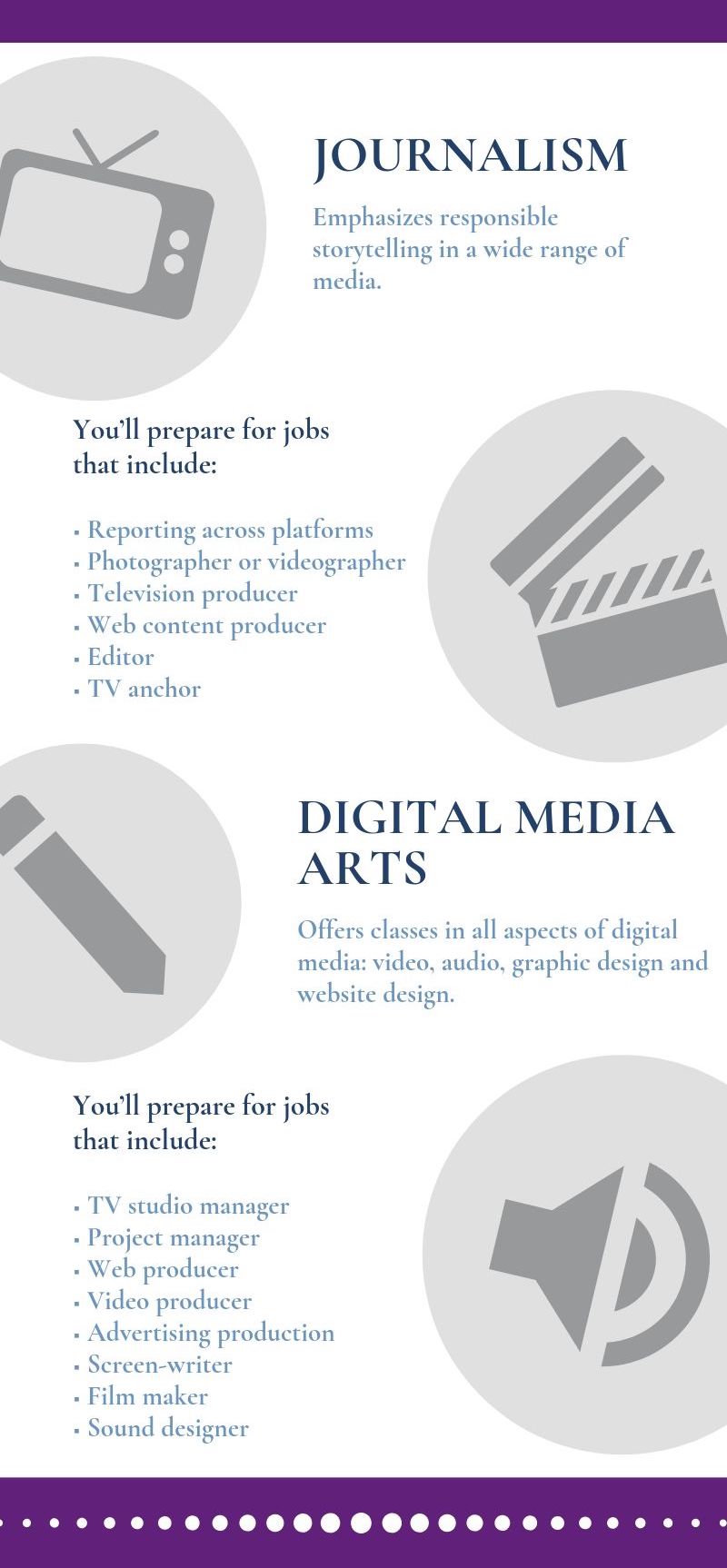
(Brooklyn Madden/TommieMedia)
Dean of the College of Arts and Sciences Yohuru Williams announced in July the reconstruction of the Communication and Journalism (COJO) department.
Under the new curriculum, communication studies such as rhetorical criticism and communication of race, class and gender will split off and be chaired under the head of the English department, Olga Herrera. Journalism, strategic communication, and digital media arts will form a new department, which will be chaired by Mark Neuzil.
The current COJO curriculum includes five tracks: creative multimedia, interpersonal communication, journalism, persuasion & social influence and strategic communication.
“The new department is going to be called the department of emerging media. Or e-Media for short,” Neuzil said.
Williams and Neuzil emphasized in their announcement letters that current COJO students will be supported if they choose to stay in the current COJO curriculum, rather than switch to the e-Media curriculum.
Neuzil included the new curriculum outline and a letter from Williams in his email informing COJO majors of the change in curriculum.
“As new courses or curricula come on line, they will be offered simultaneously with your current major. Students who will be juniors this year and newer majors will have the option to choose which curriculum they want to follow,” Williams’ letter stated.
The new curriculum requirements are still being worked out and have not been officially approved by the university.
Student reactions
“When we first got the email and all the COJO students were talking about it. I talked to a lot of people that were COJO majors and we all kind of felt like after that point, there was nothing more given to us and that was really frustrating,” sophomore Jake Tucker said. “It almost felt like they dumped it on us and then kind of left us in the dark.”
Tucker is on the strategic communication track.
“Now I don’t know what the requirements are for my major,” Tucker said. “If I wanted to do the new curriculum on a strategic communications track, what that would mean for a new curriculum? They haven’t been able to tell me that.”
Tucker found his introduction to COJO class set a good foundation for future courses.
“I took interpersonal (communications), which was kind of unique, I didn’t really know what I was doing at the time but that also opened me up to taking Xiaowen Guan,” Tucker said. “(Guan) I think is one of the most interesting professors in the field. I really enjoyed her class.”
Senior Ashmita Geyerman is double majoring in communication and journalism and justice and peace studies. Geyerman is on the interpersonal communication track. She typically only tells people she is studying communication when telling them about her communication and journalism major.
“When you say communications and journalism, you think that everyone is just going to be on TV and that’s not what you’re going to do with it. I know nothing about journalism,” Geyerman said.
Geyerman feels when communication and journalism classes are taught together, they are taught through a journalism lens.
“Which is great if you’re going for journalism but if you’re not, if you’re just going for communications aspect, it kind of takes away from it,” Geyerman said.
Geyerman hopes that the new curriculum will help focus more on communication, rather than including journalism aspects in the communication studies track.
Preparing students for success
The communication and journalism field is constantly evolving and St. Thomas is adjusting its curriculum to keep up with that.
“They’ll probably get more skills, particular skills depending on what courses they take, but we’ll be able to pinpoint some specific skill sets that we think will be useful,” said Neuzil.
The new curriculum will come with new requirements in the hopes that the update will be more appropriate to student success when they graduate, according to Neuzil.
A national trend has seen an increase in journalism school enrollment.
“Some people attribute it to President Trump,” Neuzil said. they call it the Trump effect.”
A similar trend happened in the 1970s and into the 1980s after the Watergate scandal.
“We have a lot more kids interested in journalism than there were before and so we really need to meet those needs. We’ve got to figure out how to manage that,” Neuzil said.
Rachel Torralba can be reached at torr3544@stthomas.edu.

